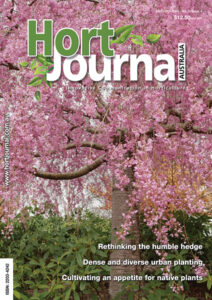
Restoring our land
Collecting stories this month exposed the very technical area of landscaping and rehabilitating degraded and contaminated industrial sites. The range of problems is immense when you consider that industrial sites may vary from a paved warehouse, disused power station or an oil terminal to a huge mine site covering thousands of hectares.
Degraded sites are found in a diverse array of landscapes and ecosystems and so no ‘one size fits all’ approach is possible. Re-establishing a degraded site could mean re-establishing a complete ecosystem. Ecosystems are more than just trees and shrubs. A properly functioning ecosystem requires a balance between soil micro-organisms, insects and a range of vertebrate species that must find a suitable habitat and coexist if the system is to remain healthy. Landscaping such sites may take several seasons to develop and as such, designers, installers and project managers can collaborate to optimise water flow patterns, and consistent plant growth and propagation. It’s a work in progress situation.
Often scientists must find novel ways to address toxic minerals left over from historic site operations and correct any imbalance that may be harmful to future users of the site. It is not inconceivable that toxic materials such as lead or mercury could enter the food chain after edible plants have concentrated these materials in their fruits, stems and leaves. Blown dust from industrial operations is another method where toxic pollutants can affect the health of the environment. Julie A. Besedin and others, in a review paper published in MDPI (Multidisciplinary Digital Publishing Institute) Journals, states that in India, mined land equates to approximately one third of agricultural land. Restoring this land to fertility is important for the community.
Sunflower (Helianthus annuus) is often chosen for large scale heavy metal decontamination projects. The performance of sunflowers for removing lead and cadmium is well documented. However, I can’t imagine large fields of sunflowers covering mine sites in arid locations such as Western Australia when the time comes to wind these mine sites down. Instead, several researchers across Australia are busily identifying native plants that may be suitable for phytoremediation projects in these situations.
Disused gold mines are notorious for arsenic-rich tailings and arsenic is a serious risk to human health and toxic to plants. Sending gold mine waste to landfill is still the most adopted mitigation method. A review by Julie A. Besedin and others showed the ability of some ferns to accumulate high levels of arsenic in their fronds. Gold mining towns in Victoria such as Bendigo are in non-coastal, arid to semi-arid environments that are not suitable for fern species. However, semi-arid plant species such as tussock grasses could be the answer. Identifying native plant species suited to mining locations is the focus of ongoing research.
History has shown us that not all restoration projects are adequate. Absence of legislation in the past has resulted in many degraded sites where the public must foot the bill for restoration.
On another note, as I write this editorial, we are experiencing the hottest spring days on record where I am based in Sydney. As we head into what looks like being a very hot summer, stay protected and stay safe everyone.
Enjoy the read.
Karen Smith and your Hort Journal Team
